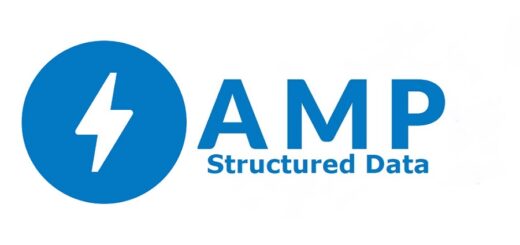Adobe Lightroom review, Is Lightroom better than Photoshop? and Is Lightroom free?
Adobe Lightroom is a popular photo editing software aimed at photographers. It edits RAW files directly, giving you more control over image quality without needing additional software. It offers many editing tools for exposure, color correction, white balance, noise reduction, and more.
What is Adobe Lightroom used for?
Adobe Lightroom is a software used for managing and editing photos. It caters especially to photographers by offering a suite of tools designed for their workflow. Adobe Lightroom can organize large photo collections using keywords, dates, camera settings, and other criteria for easy retrieval.
Adobe Lightroom can edit RAW files directly, giving photographers more control over image quality. It can apply adjustments to enhance photos, like correcting color balance, exposure, and noise reduction. It can utilize a range of presets for faster editing or creating unique looks. It can edit photos non-destructively, meaning the original image remains untouched and you can revert to it anytime.
Adobe Lightroom features
Adobe Lightroom is a software specifically designed for photographers to manage and enhance their photos. Lightroom helps photographers streamline their workflow by providing a one-stop shop for editing and managing their photos. It excels in two main areas:
Lightroom offers a wide range of tools for photographers to improve their images. You can make basic adjustments like exposure and color correction, or use more advanced features like noise reduction and local adjustments. Lightroom is known for its non-destructive editing, which means the original photo is always preserved and you can revert to earlier edits if needed.
Lightroom helps you organize your vast photo collections. You can import photos, sort them by date, keyword, or other criteria, and use facial recognition to find specific people in your photos. This makes it easier to find the photos you’re looking for and keeps your library organized.
Adobe Lightroom is a powerful and versatile tool for photographers who want to improve their photos and manage their photo library efficiently. Lightroom provides a comprehensive toolbox for photographers to improve their images. You can make adjustments to:
- Color and Tone: Balance colors, adjust exposure, and achieve creative effects.
- Clarity and Detail: Sharpen images, reduce noise, and bring out details.
- Lens Corrections: Fix distortions caused by camera lenses.
- Cropping and Composition: Enhance the framing of your photos.
- Presets and Profiles: Apply pre-made filters or create your custom looks.
Photo Organization: Managing a large collection of photos can be overwhelming. Lightroom offers powerful features to:
- Import and Organize: Easily import photos from various sources and categorize them using keywords, ratings, flags, and collections.
- Search and Filter: Quickly find specific photos based on various criteria.
Lightroom helps photographers streamline their workflow by offering a one-stop shop for both photo editing and organization. Lightroom is a powerful tool for photographers who want to efficiently edit and organize their photos. If you need advanced image manipulation or graphic design features, though, you might need to use Lightroom alongside Photoshop.
Advantages of Adobe Lightroom
Adobe Lightroom is a popular photo editing software for photographers, It is designed for a streamlined workflow, making it quicker to edit multiple photos compared to Photoshop‘s more granular approach. It is a master at managing photo libraries. You can import, sort, tag, and search your photos efficiently.
Lightroom excels at editing RAW files directly from your camera, giving you more control over the final image quality. the uncompressed format from your camera containing the most image data. Unlike Photoshop, you don’t need extra plugins for RAW editing in Lightroom.
Lightroom allows creating and applying presets (editing filters) to a batch of photos at once, saving tons of time. Lightroom has a more user-friendly interface compared to Photoshop, making it easier for beginners to learn and use. Lightroom is a powerful tool for editing and organizing large photo collections.
Lightroom excels at editing large batches of photos at once, saving you tons of time. You can apply the same edits or presets to multiple photos quickly. Despite being easier to use than Photoshop, Lightroom offers a wide range of editing tools for exposure, color correction, white balance, noise reduction, and more.
Edits in Lightroom are non-destructive, meaning the original photo file remains untouched. You can always revert to the original if you’re not happy with your edits. Edits are saved separately from the original photo, so you can always go back to the original if needed.
Lightroom comes with a variety of built-in presets and profiles that can help you achieve different looks and styles with just a few clicks. You can also create and save your custom presets for future use.
Lightroom is a great tool for organizing your photo library. You can import photos, add keywords, create collections, and use other features to keep your photos categorized and easy to find. Lightroom has powerful tools to organize your photos by keyword, date, camera settings, and other criteria.
Lightroom offers a comprehensive set of tools for color correction, exposure adjustments, noise reduction, and other essential edits. Batch editing and tools designed for photo enhancement make editing large collections of photos efficient.
Disadvantages of Adobe Lightroom
Lightroom isn’t designed for heavy image manipulation like adding or removing objects. For such tasks, Photoshop is a better fit. Lightroom lacks advanced editing tools found in Photoshop, like compositing images, creating graphics, or heavy retouching.
Unlike Photoshop, Lightroom doesn’t use layers, a core feature in Photoshop that lets you build up edits non-destructively. This means you can’t build up edits on separate layers and have more control over the editing process. Lightroom edits happen on a single image, unlike Photoshop‘s layers that allow for complex edits and selective adjustments.
Lightroom is part of the Adobe Creative Cloud suite, which requires a monthly or annual subscription to use. This can be a cost consideration, especially for casual users. Even though it’s easier to use than Photoshop, Lightroom still has a learning curve. There are many tools and features to explore, and mastering them takes time and practice.
While Lightroom offers a good range of editing tools, it doesn’t have the same level of functionality as Photoshop. If you need to do complex edits like removing objects, compositing images, or creating special effects, you’ll need to switch to Photoshop.
You can subscribe to Science Online on YouTube from this link: Science Online
You can download the application on Google Play from this link: Science Online Apps on Google Play
Adobe Photoshop advantages and disadvantages
Adobe Premiere Pro CC review, uses, advantages and disadvantages
Adobe Photoshop CC importance, uses, tools and features
Animation technology in Education and training advantages and disadvantages
Animated GIFs (Graphic Interchange Format) advantages & disadvantages




